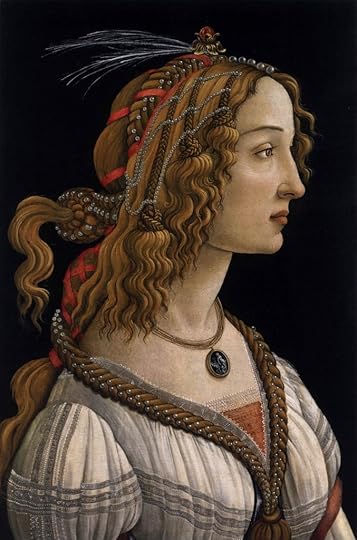Historic Bite #1 – Boticelli’s Muse
Who was the woman that posed for Botticelli’s Birth of Venus?
One of the most famous pieces of Renaissance art is The Birth of Venus by Sandro Botticelli. It depicts the goddess emerging from the sea on a giant shell, surrounded by two figures preparing to dress her in robes of silk. She covers herself modestly while waiting for her clothing to arrive. Her red hair is caught in the wind, as if toyed with by a lover.
Who was the model captured in this painting? She was an Italian noblewoman from Genoa named Simonetta Cataneo, later Vespucci. Born on 20 January, 1454, she married a Florentine merchant named Marco Vespucci, the wealthy cousin of Amerigo Vespucci, who would eventually give his name to the New Continent.
After moving to Florence with Marco, Simonetta became one of the best-known women in the city due to her intellect and looks.
Her arrival was timely: they were in the midst of the Golden Age of Florence. Renowned artists from all over Europe recognized it as the place to be if they wished to have their work seen. Art was more than a passion; it was a competition. They all wished to outdo one another.
It wasn’t long before one of these artists asked Simonetta to model for him. The artist was Sandro Boticelli.
Her time as an “it” girl was rife with conflict. Soon after she began modeling for Boticelli, her jealous husband began to suspect his wife and the artist of having an affair. It is true that Boticelli was infatuated with her—the proof is in how many paintings of his depict a woman with red hair.

However, her most prominent suitor appears to have been Giuliano de’ Medici. When Marco discovered this, he demanded that she renounce her love for de’ Medici. Simonetta refused, so Vespucci imprisoned her, not caring that she was at the time severely ill with tuberculosis.
Vespucci allowed de’ Medici to be with Simonetta as she was dying. She passed away at the young age of twenty-two on 26 April, 1476, but her face has been rendered immortal by Boticelli in his iconic pieces featuring her.
Giuliano de Medici was assassinated shortly after Simonetta’s death. Furthermore, no solid proof of an affair between them was ever produced.
As for Boticelli, he requested to be buried at the next to Simonetta’s tomb in the church of Ognissanti after his death in 1510. When she was alive, Simonetta had all of Florence at her feet; after his death, it was the artist himself who achieved the honor of staying there.
I hope that you enjoyed this small bite from the past.
To learn more about women and art in history, consider subscribing to The Literary Ladies’ Tearoom!



